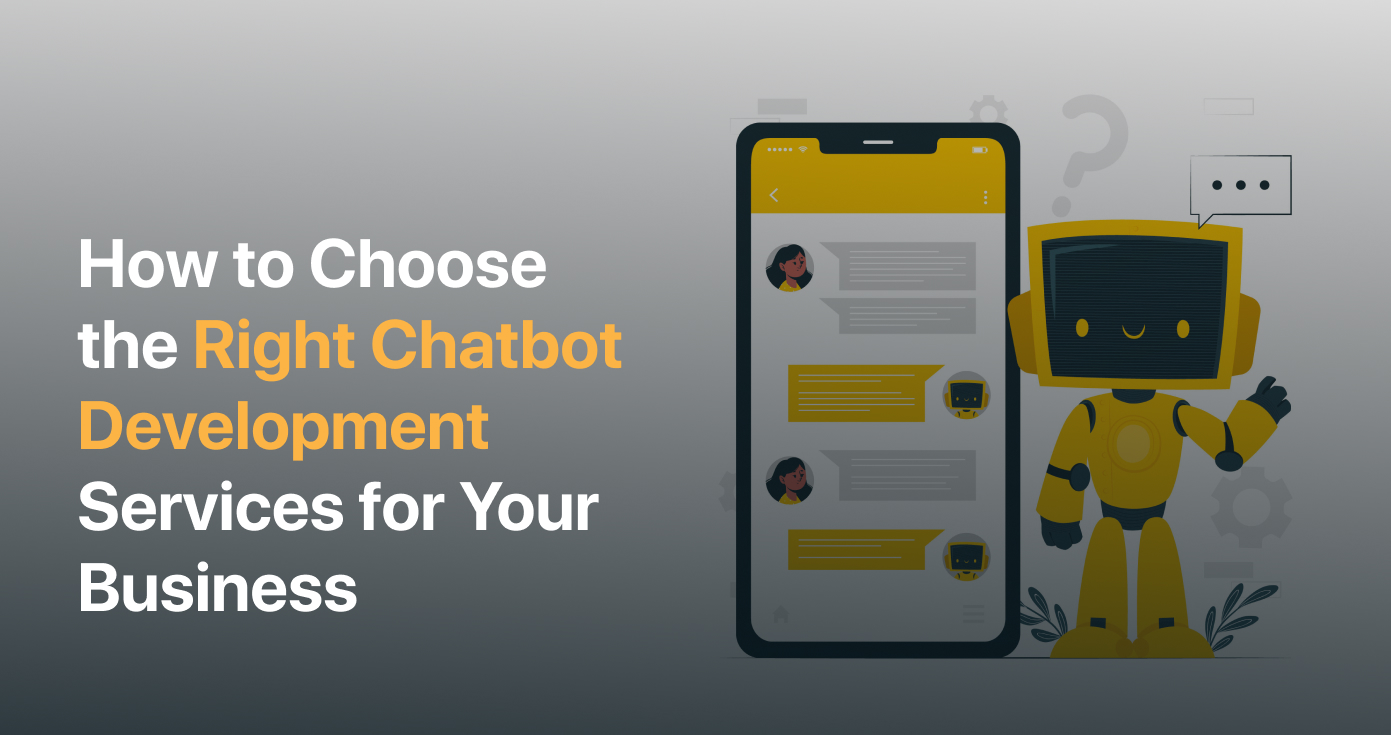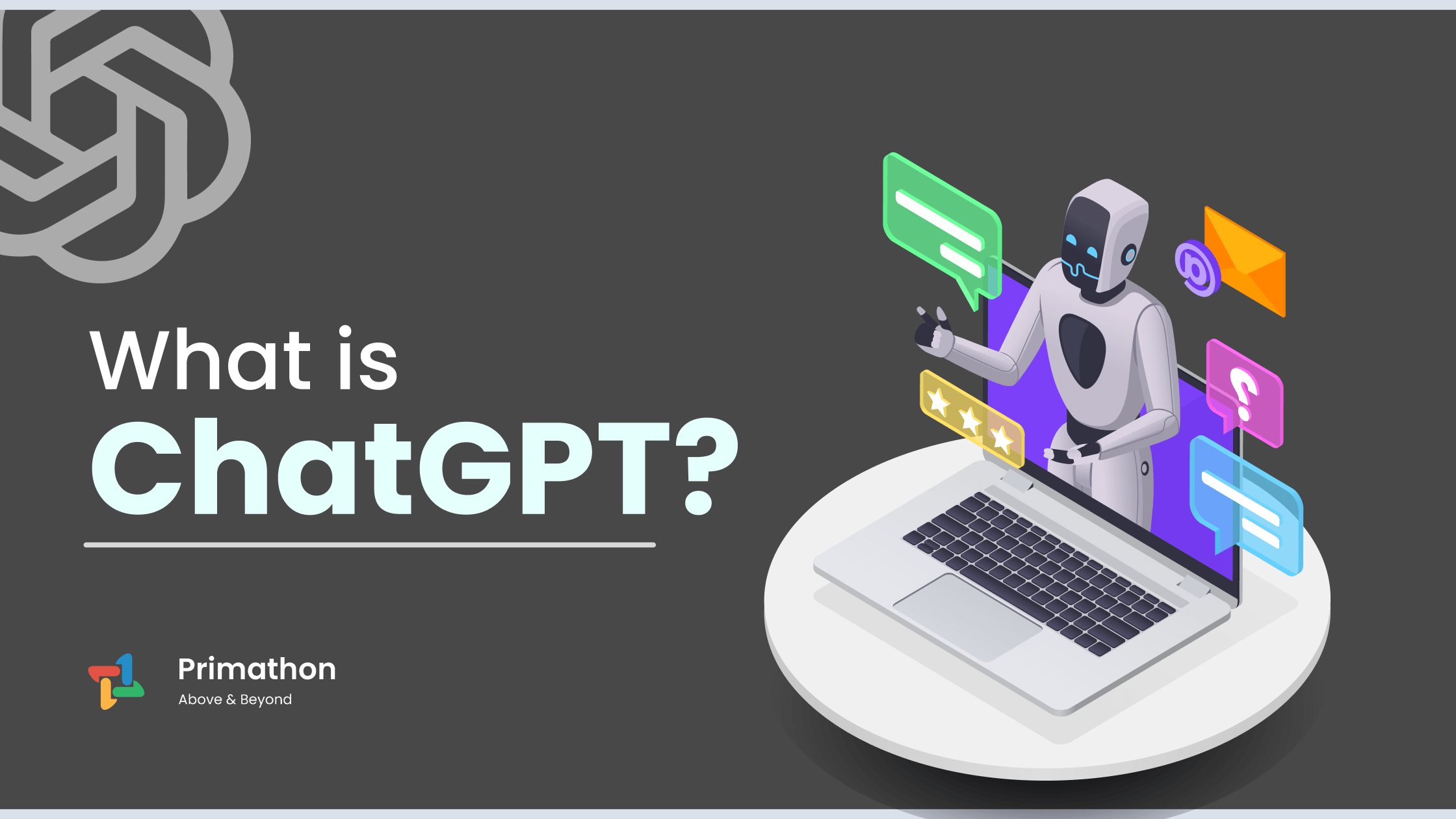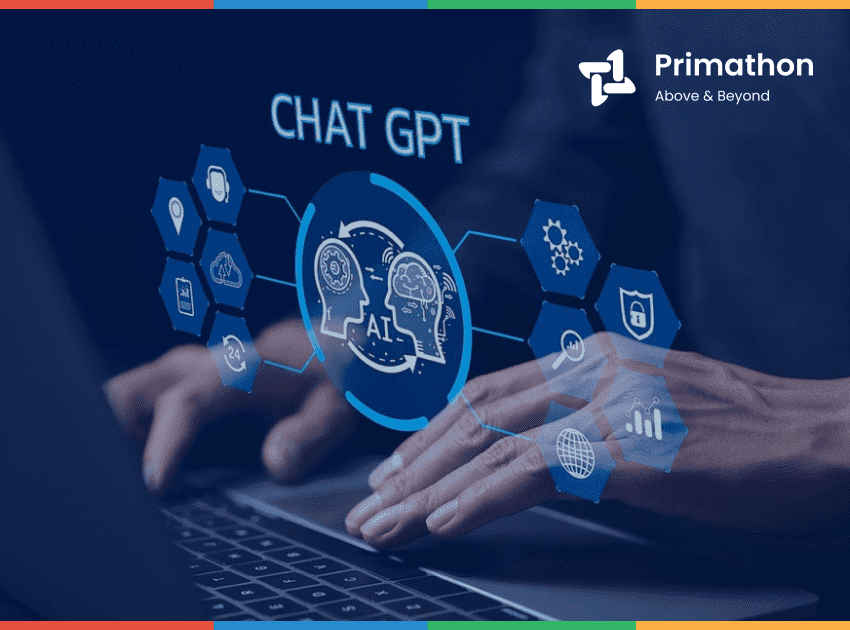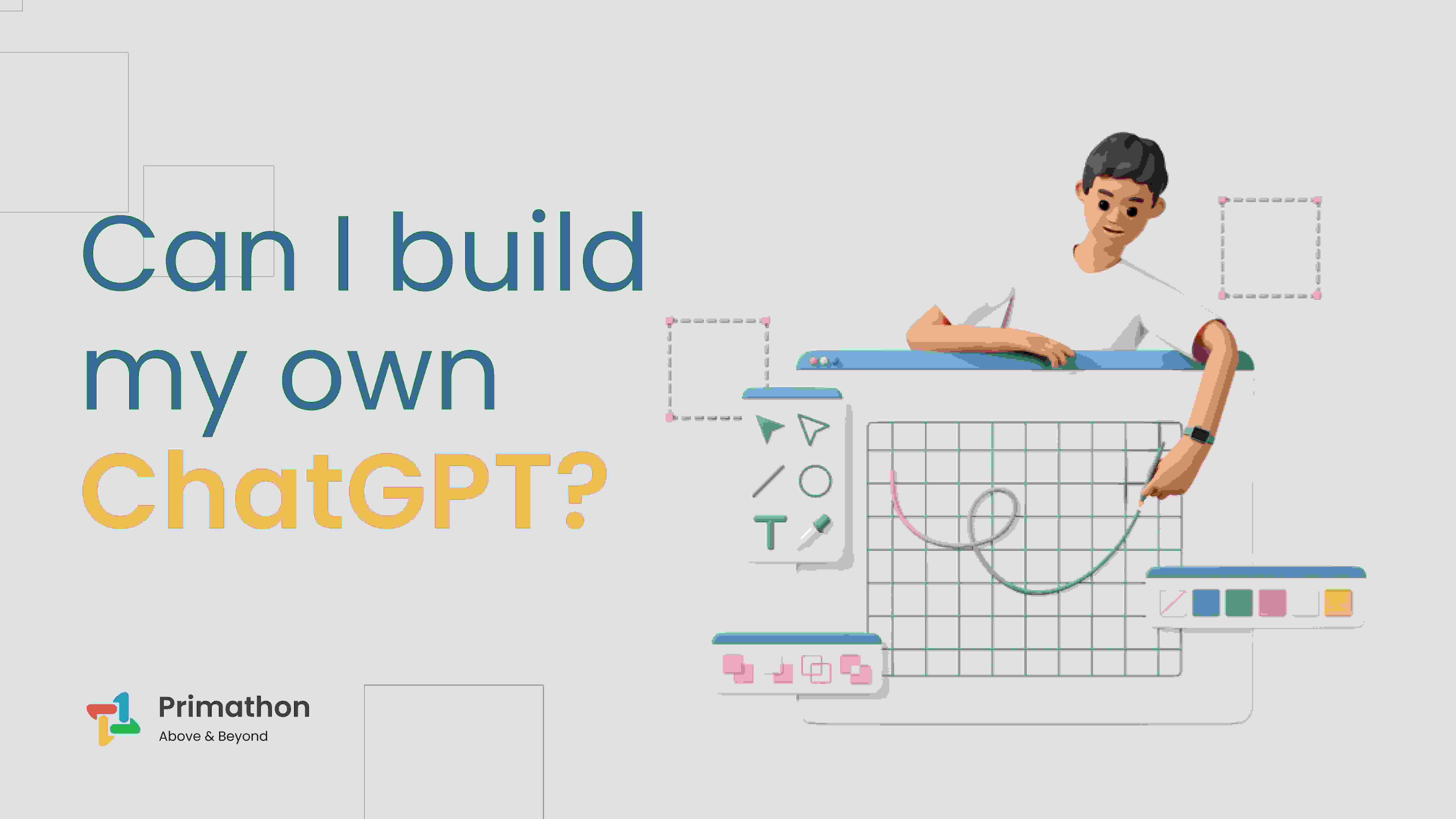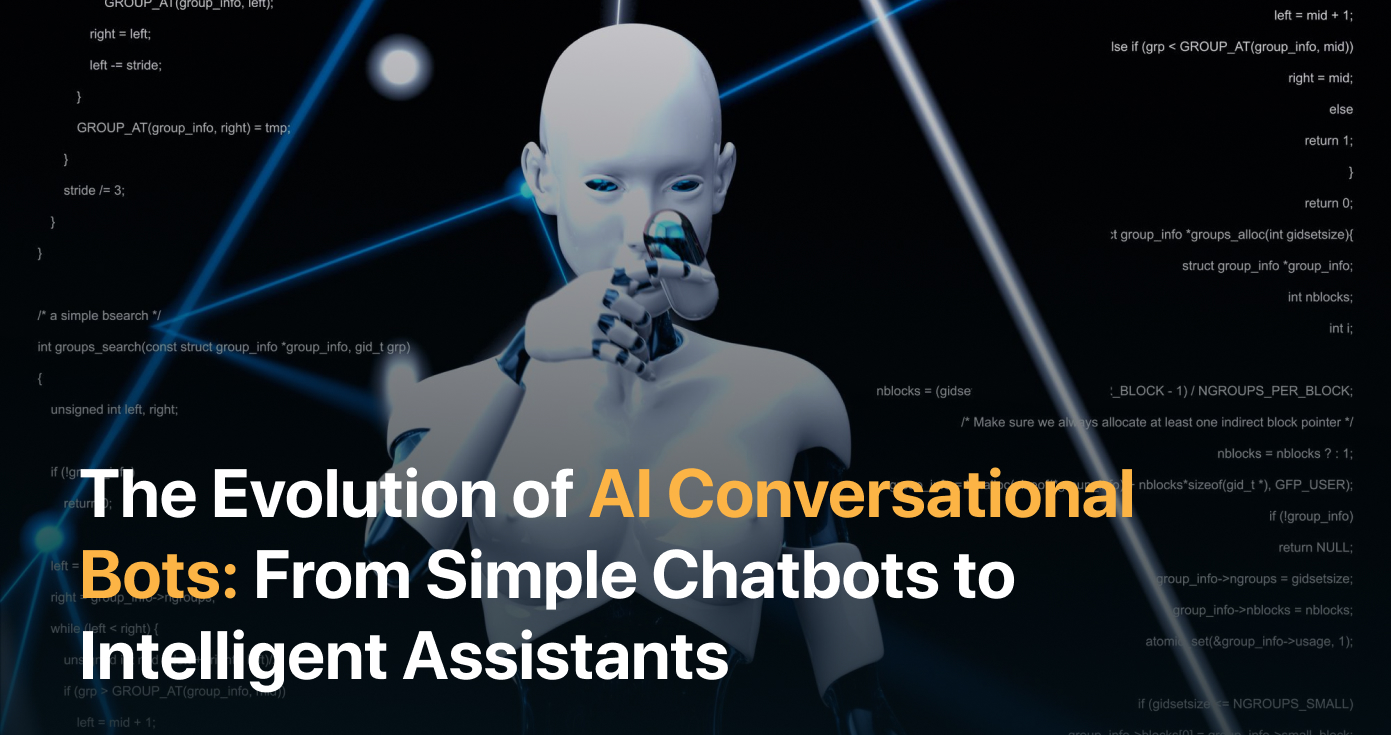
The Evolution of AI Conversational Bots: From Simple Chatbots to Intelligent Assistants
Conversational bots indeed reflect a great transformation journey of artificial intelligence (AI) that has gained pace and showcased major transformative changes. From the customer service robots that were initially limited to responding to simple messages given to them in strict scripts, the field has evolved into advanced chatbots that are capable of natural language processing, understanding, and natural language context. 73% of consumers anticipate using digital assistants on websites for easy interactions 39% of all conversations between businesses and customers are facilitated by advanced chatbots.
Such a shift, fueled by the unyielding desire for as close to natural interactions as possible, has taken the progression of conversational AI development to another level.
In today’s world, not only do advanced chatbots enable free and easy communication, but they also allow businesses and individuals to maximize their prospects and experiences in the most efficient manner. The following article traces the chronological development of intelligent assistants as the main node of growth in the context of the advance of artificial intelligence and presents breakthrough moments of future evolution.
Conversational AI Development: The Ultimate Breakthrough in the AI Journey!
Now it is time to reflect on the evolution of conversational AI, moving from merely an automated conversation to a naturally intelligent conversation. First, these programs involved simple decision trees, in which the chatbot searches for specific keywords in the user’s input and produces a corresponding pre-written output. Although, as time went on and AI technology continued to develop, so did conversational AI. Today, intelligent assistants are built using features such as NLP and machine learning to capture and interpret human language based on its accuracy and context. According to 56% of firms chatbot technology is a revolutionary force.
This development has been characterized by important landmarks or advancements such as deep learning architectures, neural networks, and data-driven models. These improvements have made it possible for AI bots to not only grasp the purpose of user requests but also innovate consecutively, thus improving their outputs after every interaction.
Furthermore, the replacement of traditional messaging systems by sophisticated chatbots across numerous industries, including but not limited to customer service, healthcare, education, and finance, has transformed the methods of business-to-customer relations and the ways people obtain knowledge. In the modern world, intelligent assistants have become indispensable tools to improve organizational productivity, tailor-made services that give users unique experiences, and perform many functions previously handled by real people.
Conversational AI will only progress further in terms of technologies and applications in the coming years, and it could be entrusted with improving the capability for emotion recognition, multilingual voice and text recognition, as well as IoT and other technology integration. With the developments in the field still being a relatively recent concept, the possibilities for these intelligent assistants when it comes to influencing daily lives and business processes are poised to skyrocket in the coming years, making them essential tools in today’s age of digital disruption.
Evolution of AI Bots: From Simple Assistants to Advanced Chatbots
Here are key pointers highlighting the evolution of AI bots from simple chatbots to intelligent assistants:
36% of marketing professionals said their companies interact with customers through chatbots and AI-powered customer service.
- Basic Chatbots: Previous AI bots operated as simplistic ‘if this, then that’ systems, reacting only to specific keywords or commands, resulting in limited flexibility in their interactions.
- Natural Language Processing (NLP): New updates in NLP subsequently allowed bots to mimic the exact human conversation in such a way that they inferred the context and intent behind keywords.
- Machine Learning and AI: Training in machine learning helped the bots learn from the available data and also from their interactions with users to make the correct kind of response in the correct way in subsequent interactions.
- Personalization: Sophisticated techniques were developed to make helpful virtual helpers that would pick up information from users and adjust the given information to fit their needs.
- Multi-modal Interaction: The unlimited ability of current bots can allow people to converse with them using text, voice, and even three-dimensional interfaces, which can improve the interface quality.
- Integration with IoT and AIoT: Both platforms are mobile and use the Internet of Things (IoTs) to connect with smart devices and receive contextual information from them.
- Advanced Analytics: Smart companions analyze data, make suggestions based on the findings, enhance the comprehension of client needs, and make forecasts.
- Ethical and Social Implications: Recently, as AI bots’ capabilities continue to advance, concerns over privacy, bias, and transparency have presented themselves as key factors defining their growth or use.
- Industry Applications: In every related field—consumer interaction, healthcare, education, finance, and other areas—these AI bots are used to increase the efficiency of operations and improve customer satisfaction.
- Future Prospects: The future is going to see even more growth in the field of emotional intelligence, real-time learning abilities, and the incorporative nature to become part of our daily lives to make it easier for us. We will surely witness AI bots becoming one of the most important constituents of the digital era.
Conclusion
Approximately three out of every four businesses using chatbots are happy with the outcomes.
In sum, the emergence of intelligent conversational AI assistants as advanced chatbots is a meaningful stage in technological advancement. While earlier we had simple ‘chatbots’ that were limited to their capability of following a conversation in a conversational mode, now these intelligent AI assistants are enough to interpret natural language, get inclined towards the audience, and even coordinate across channels. And as they move forward, the combination of IoT and analytics is capable of better delivering on these potentials. However, as people continue to welcome such technologies into their day-to-day lives, it becomes imperative to confront these ethical questions.
In the future, intelligent assistants will continue to revolutionize the way users interact with technology and products, as well as enterprise performance, thus underscoring their visionary importance for the innovation space.

